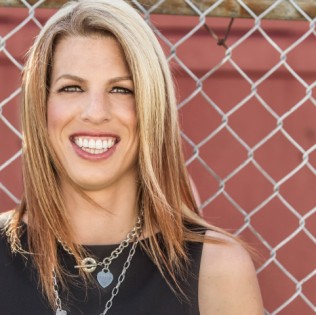by Tanya Alexander
Published on June 20th, 2011
Fueling the Future: The Power of Diversity
The air was electric at the St. John’s Convention Centre the morning of March 8, when the doors swung open for the first international Fueling the Future: Women in Oil and Gas conference. Nearly 400 women gathered from around the globe on the 100th anniversary of International Women’s Day with a treasure trove of stories and information to share in their roles as policy makers, educators and employers in the oil and gas and related industries.
Words like “diversity” and “trailblazing” resonated off the walls and into the consciousness of the captivated audience. It became apparent to me that the term “diversity” as a denotation is replacing “equity” in this new age. And when guest keynote speaker Hege Marie Norheim, senior VP of Statoil Norway, spoke of diversity as a quality assurance investment, it just made sense.
“Norway has the world’s highest percentage of women in the workplace – we make up 70 per cent,” said Norheim. She revealed that Norway’s government requires at least 40 per cent of its members to be women, and that 50 per cent are. Having so many women in the workplace and at the helm has made a huge impact.
“Working women were asking the question of responsibility in having children,” said Norheim, “and realizing that it is not a gender issue, but a workplace issue,” she said, going on to reveal that Norway now offers universal childcare for children from ages one-six and after school until they reach 10 years of age. “This childcare system is the highest-social-economic return of all investments in Norway.”
Conference co-chair Caron Hawco couldn’t be more pleased with Norheim’s presence. Hawco said, “She is incredible – she flew in one day and out the next just to be here.” It takes 16 hours each way. That’s one example of the dedication she and many like her are bringing to the industry. There are people here from Schlumberger in Paris, Exxon in Houston, all corners. “Hege Marie Norheim was so open and sharing about her experiences in the industry … they all were,” said Hawco. “When you go to oil and gas conferences, you don’t generally see that caring-and-open style from speakers – it’s often much more formal.”
And it wasn’t just women raising the collective consciousness; Hawco says that when the organizing committee was planning this event, they knew it was important to have men at the table. “We knew we wouldn’t attract a great deal of men, but this could not be a room of women,” she says. “We targeted those male leaders who effect change in the industry, the ‘who’s who’ of companies on the horizon in Newfoundland and Labrador. And you know what? They stayed, they participated, they took notes … they recognized the value. One male company president said to me, ‘I have some homework to do,’” laughs Hawco.
She broached the subject of a labour shortage in North America1 and the fact that there is a pool of talent that would provide a ready solution – women. According to the United Nations (UN), there is a direct link between increased female labour participation and economic growth; “It is estimated that if women’s paid employment rates were raised to the same level as men’s: America’s GDP would be nine per cent higher; the euro-zone’s would be 13 per cent higher; and Japan’s would be boosted by 16 per cent.”
Also according to the UN’s Facts & Figures on Women, Poverty and Economics, women’s nominal wages are 17 per cent lower than men’s; we earn only 10 per cent of the income and own only one per cent of the world’s property, even though we perform over 65 per cent of the world’s work and produce 50 per cent of the food.
John Connors, executive manager of the Council of Marine Professional Associates (COMPASS), led a very frank discussion at the conference about the need for more women in the labour force. “This shortage of personnel is practically a crisis,” he said.
“From its inception,” says Connors, “COMPASS adopted the stance that the marine transportation industry must be of equal opportunity in Canada, and they wanted to lead the way with its progressive-gender equity program.”
“We didn’t hope to develop gender equity in the industry; we planned it,” he said, “and COMPASS expects to set the standard for Canada and provide a template for other jurisdictions.”
“The Fueling the Future: Women in Oil and Gas” conference was informative and inspiring and set the stage for what is to come. I believe we collectively felt the tide turning with the realization that the concept of gender equity – diversity in the work place – has reached its time. Our strength in this industry will come not from innovation of technology, but from a revolution of thought and action. Powerful stuff.
1 Human Resources and Social Development Canada’s 10-year Outlook for the Canadian Labour Market (2006-2015) reveals a shortage for all sectors either current or future; the oil and gas industry is listed as both.
Did you enjoy this article?

 Executive Protection - Its Smart Business Insurance
Executive Protection - Its Smart Business Insurance Canadian LNG on Ice? Where Will the Puck Stop?
Canadian LNG on Ice? Where Will the Puck Stop? What Makes Oil Companies Likeable?
What Makes Oil Companies Likeable? I Am a Woman, and I Am a Leader
I Am a Woman, and I Am a Leader Daring Leaders: 5 Qualities they MUST have
Daring Leaders: 5 Qualities they MUST have
